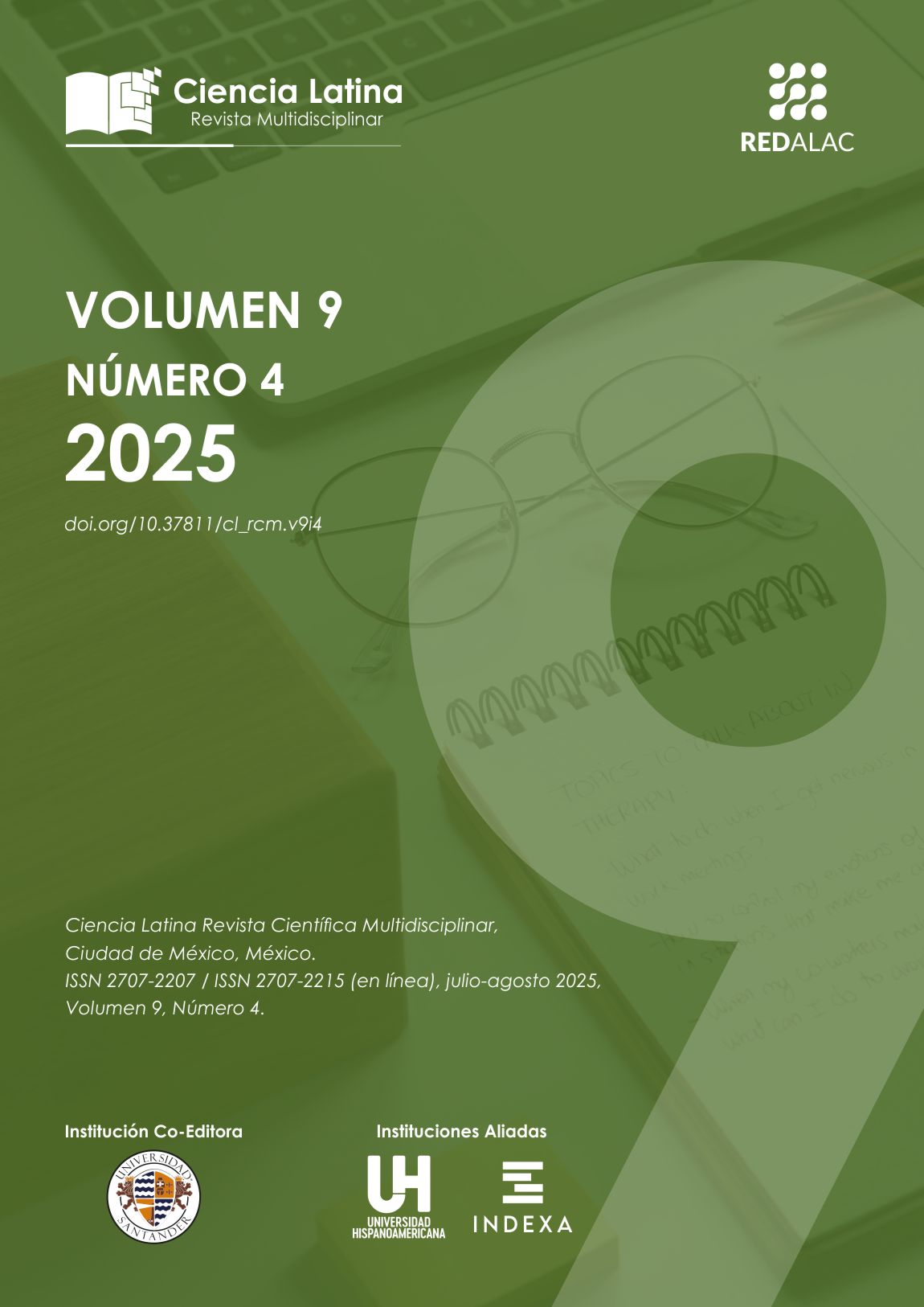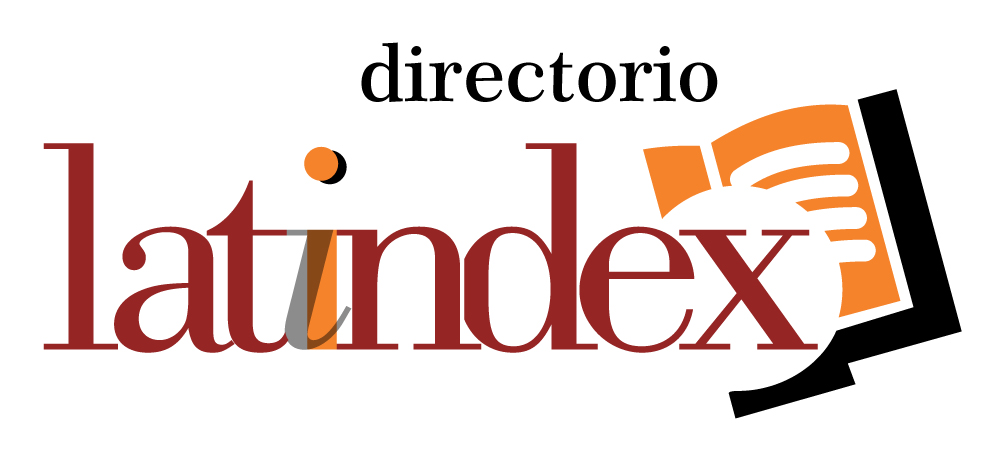Análisis Teórico-Comparativo del Salto Alien: Lesiones Musculoesqueléticas y Contraste Biomecánico con Saltos Pliométricos Estandarizados
Resumen
El objetivo fue analizar, mediante una revisión narrativa crítica con enfoque teórico comparativo, la validez biomecánica del Salto Alien y su pertinencia en el entrenamiento de fisicoculturismo y fitness. Se contrastó el Salto Alien con protocolos estandarizados de saltos pliométricos descritos en guías y literatura entre 2010 y 2025. Se compararon parámetros de alineación articular, control neuromuscular y transferencia secuencial de fuerzas. El análisis identificó desalineaciones multiplanares en despegue, vuelo y aterrizaje, con valgo dinámico de rodilla, aducción y rotación interna de cadera, rotación interna tibial y pronación del tobillo, que incrementan la carga sobre los ligamentos cruzado anterior y colateral medial, el tendón rotuliano, el labrum acetabular y el tendón de Aquiles. Estas alteraciones exceden los rangos descritos para los momentos articulares y las fuerzas de reacción del suelo en cadera, rodilla y tobillo, y se asocian con lesiones agudas y procesos degenerativos. Se concluye que el Salto Alien carece de fundamentos biomecánicos y no cumple criterios de seguridad, por lo que se recomienda excluirlo de programas de entrenamiento. Se sugiere sustituirlo por saltos pliométricos estandarizados que prioricen la alineación, el control neuromuscular y la progresión de cargas, con supervisión especializada para preservar la integridad articular de practicantes en gimnasios.
Descargas
Citas
Aladro Gonzalvo, A. R. (2015). Las redes sociales en internet como herramienta para la promoción de la actividad física y la salud: Un recurso poco explorado científicamente. Pensar en Movimiento: Revista de Ciencias del Ejercicio y la Salud, 13(1), 1–8. https://doi.org/10.15517/pensarmov.v13i1.17194
American College of Sports Medicine. (2014). ACSM’s guidelines for exercise testing and prescription (9.ª ed.). Lippincott Williams & Wilkins.
American College of Sports Medicine. (2017). ACSM’s guidelines for exercise testing and prescription (10.ª ed.). Lippincott Williams & Wilkins.
American College of Sports Medicine. (2025). Sport specialization. American College of Sports Medicine. https://acsm.org/wp-content/uploads/2025/02/NYSHSI-Sports-Specialization-PDF.pdf
American Council on Exercise. (s. f.). Exercise technique guidelines. https://www.acefitness.org/
Aragón-Vargas, L. F., & González-Lutz, M. I. (2023). A novel validation approach shows new, solid reasons why vertical jump height should not be used to predict leg power. Pensar en Movimiento: Revista de Ciencias del Ejercicio y la Salud, 21(2), e53154. https://doi.org/10.15517/pensarmov.v21i2.53154
Arntz, F., Mersmann, F., Böhm, S., & Arampatzis, A. (2022). Effect of plyometric jump training on skeletal muscle hypertrophy in healthy individuals: A systematic review with multilevel meta-analysis. Frontiers in Physiology, 13, 888464. https://doi.org/10.3389/fphys.2022.888464
Australian Strength and Conditioning Association. (2022). Coach accreditation framework [PDF]. https://www.strengthandconditioning.org/documents/asca-coach-accreditation-framework-from-2022.pdf
Baig, W. S., Elahib, H., & Hashmi, N. U. (2023). Impact of social media fitness contents on health and fitness motivation of the users. Global Digital & Print Media Review, 6(4), 66–80. https://doi.org/10.31703/gdpmr.2023(VI-IV).05
Barrio, E. D., Thapa, R. K., Villanueva Flores, F., García Atutxa, I., Santibañez Gutiérrez, A., Fernández Landa, J., & Ramírez Campillo, R. (2023). Plyometric jump training exercise optimization for maximizing human performance: A systematic scoping review and identification of gaps in the existing literature. Sports, 11(8), 150. https://doi.org/10.3390/sports11080150
Baus, M. R., López, M. A., & Ortega, M. E. (2020). Biomechanical variables in complex plyometric movements: A review. Journal of Strength and Conditioning Research, 34(9), 2452–2460. https://doi.org/10.1519/JSC.0000000000003688
Biscarini, A., Contemori, S., Dieni, C. V., & Panichi, R. (2020). Joint torques and tibiofemoral joint reaction force in the bodyweight “wall squat” therapeutic exercise. Applied Sciences, 10(9), 3019. https://doi.org/10.3390/app10093019
Bobbert, M. F., & van Ingen Schenau, G. J. (1988). Coordination in vertical jumping. Journal of Biomechanics, 21(3), 249–262. https://doi.org/10.1016/0021-9290(88)90175-3
Cook, J. L., & Purdam, C. R. (2009). Is tendon pathology a continuum? A pathology model to explain the clinical presentation of load-induced tendinopathy. British Journal of Sports Medicine, 43(6), 409–416. https://doi.org/10.1136/bjsm.2008.051193
Cormie, P., McGuigan, M. R., & Newton, R. U. (2011). Developing maximal neuromuscular power: Part 1—Biological basis of maximal power production. Sports Medicine, 41(1), 17–38. https://doi.org/10.2165/11537690-000000000-00000
Dai, B., Mao, D., Garrett, W. E., & Yu, B. (2014). Anterior cruciate ligament injuries in soccer: Loading mechanisms, risk factors, and prevention programs. Journal of Sport and Health Science, 3(4), 299–306. https://doi.org/10.1016/j.jshs.2014.06.002
Donati, D., Giorgi, F., Farì, G., Tarallo, L., Catani, F., & Tedeschi, R. (2024). The influence of pelvic tilt and femoral torsion on hip biomechanics: Implications for clinical assessment and treatment. Applied Sciences, 14(20), 9564. https://doi.org/10.3390/app14209564
Drahota, A., Ward, D., Udell, J. E., Soilemezi, D., Kyriazopoulou, C., Ogollah, R., McDaid, D., & Kendrick, D. (2022). Shock-absorbing flooring for fall-related injury prevention in healthcare settings: A systematic review and meta-analysis. Injury Prevention, 28(5), 410–417. https://doi.org/10.1136/injuryprev-2021-044450
Emery, C. A., Roy, T. O., Whittaker, J. L., Nettel-Aguirre, A., & van Mechelen, W. (2015). Neuromuscular training injury prevention strategies in youth sport: A systematic review and meta-analysis. British Journal of Sports Medicine, 49(13), 865–870. https://doi.org/10.1136/bjsports-2015-094639
Farina, D., Merletti, R., & Enoka, R. M. (2014). The extraction of neural strategies from the surface EMG: An update. Journal of Applied Physiology, 117(11), 1215–1230. https://doi.org/10.1152/japplphysiol.00162.2014
Fitness Training. (2020, 10 de agosto). Alien jump exercise demonstration [Video]. YouTube. https://www.youtube.com/watch?v=DjQ1sFpzrSo
Gazzano, F., & Gabbett, T. J. (2017). A practical guide to workload management and injury prevention in college and high school sports. NSCA Coach, 4(4). https://www.nsca.com/contentassets/fe35000d68b845d2810d96740daffc69/coach-4.4.5-a-practical-guide-to-workload-management-and-injury-prevention.pdf
Giarmatzis, G., Zacharaki, E. I., & Moustakas, K. (2020). Real time prediction of joint forces by motion capture and machine learning. Sensors, 20(23), 6933. https://doi.org/10.3390/s20236933
Gómez Echeverry, L. L., Jaramillo Henao, A. M., Ruiz Molina, M. A., Velásquez Restrepo, S. M., Páramo Velásquez, C. A., & Silva Bolívar, G. J. (2018). Sistemas de captura y análisis de movimiento cinemático humano: Una revisión sistemática. Prospectiva, 16(2), 24–34. https://doi.org/10.15665/rp.v16i2.1587
Gómez, L. S. (2018). Aspectos biomecánicos asociados a lesiones por sobreuso en el atletismo de carreras. Revista de Expomotricidad. https://revistas.udea.edu.co/index.php/expomotricidad/article/view/332007
Gómez Salazar, L. (2009). La biomecánica en la prevención de lesiones deportivas [Ponencia]. 7.º Seminario Internacional de Entrenamiento Deportivo. https://revistas.udea.edu.co/index.php/expomotricidad/article/download/331964/20787952
González-Millán, C., Rodríguez-Fernández, A., & Jiménez, A. (2024). Biomechanical adaptations during dual-task landing protocols: Implications for injury risk. Sports Biomechanics, 23(2), 154–170. https://doi.org/10.1080/14763141.2023.1999965
Haff, G. G., & Triplett, N. T. (Eds.). (2016). Essentials of strength training and conditioning (4.ª ed.). Human Kinetics.
Hauger, O., Moinard, M., Klouche, S., Guérini, H., Griffon, V., & Duvauferrier, R. (2011). Pathologie labrale et conflits de hanche. Journal de Radiologie, 92(6), 524–534. https://doi.org/10.1016/j.jradio.2011.04.010
Heil, J., Loffing, F., & Büsch, D. (2020). The influence of exercise-induced fatigue on inter-limb asymmetries: A systematic review. Sports Medicine—Open, 6, 39. https://doi.org/10.1186/s40798-020-00270-x
Helme, M., Tee, J., Emmonds, S., & Low, C. (2021). Does lower-limb asymmetry increase injury risk in sport? A systematic review. Physical Therapy in Sport, 49, 204–213. https://doi.org/10.1016/j.ptsp.2021.03.001
Hewett, T. E., Myer, G. D., & Ford, K. R. (2006). Anterior cruciate ligament injuries in female athletes: Part 1, mechanisms and risk factors. The American Journal of Sports Medicine, 34(2), 299–311. https://doi.org/10.1177/0363546505284183
Hewett, T. E., Myer, G. D., Ford, K. R., Heidt, R. S., Jr., Colosimo, A. J., McLean, S. G., van den Bogert, A. J., Paterno, M. V., & Succop, P. (2005). Biomechanical measures of neuromuscular control and valgus loading of the knee predict anterior cruciate ligament injury risk in female athletes: A prospective study. The American Journal of Sports Medicine, 33(4), 492–501. https://doi.org/10.1177/0363546504269591
Hu, Z., Kim, Y., Zhang, Y., Zhang, Y., Li, J., Tang, X., Sohn, J., & Kim, S. (2022). Correlation of lower limb muscle activity with knee joint kinematics and kinetics during badminton landing tasks. International Journal of Environmental Research and Public Health, 19(24), 16587. https://doi.org/10.3390/ijerph192416587
Hübscher, M., Zech, A., Pfeifer, K., Hänsel, F., Vogt, L., & Banzer, W. (2010). Neuromuscular training for sports injury prevention: A systematic review. Medicine & Science in Sports & Exercise, 42(3), 413–421. https://doi.org/10.1249/MSS.0b013e3181b88d37
International Sports Sciences Association. (s. f.). Certification standards and code of ethics. https://www.issaonline.com/
Jarvis, L. M. (2018). Postural control and angular variables in plyometric landing: A systematic review. International Journal of Sports Science, 8(3), 111–121. https://doi.org/10.5923/j.sports.20180803.04
Koga, H., Nakamae, A., Shima, Y., Bahr, R., Engebretsen, L., & Krosshaug, T. (2010). Mechanism for noncontact anterior cruciate ligament injuries: Knee joint kinematics in 10 injury situations from female team handball and basketball. The American Journal of Sports Medicine, 38(11), 2218–2225. https://doi.org/10.1177/0363546510373570
Komi, P. V. (Ed.). (2003). Strength and power in sport (2nd ed.). Blackwell Science.
Kraemer, W. J., & Ratamess, N. A. (2018). Fundamentals of resistance training: Progression and exercise prescription. En G. G. Haff & N. T. Triplett (Eds.), Essentials of strength training and conditioning (4th ed., pp. 99–134). Human Kinetics.
Lee, S. Y., & Lim, C. B. (2012). Biomechanical analysis of drop jump landing techniques: Implications for performance and injury prevention. Journal of Sports Science and Medicine, 11(4), 538–543. https://www.jssm.org/hf.php?id=jssm-11-538
Liebert, P. L. (2021). Fracturas por estrés. Manual MSD, versión para profesionales. https://www.msdmanuals.com/es/professional/lesiones-y-envenenamientos/lesiones-deportivas/fracturas-por-estr%C3%A9s
Markovic, G., & Mikulic, P. (2010). Neuro-musculoskeletal and performance adaptations to lower-extremity plyometric training. Sports Medicine, 40(10), 859–895. https://doi.org/10.2165/11318370-000000000-00000
National Academy of Sports Medicine. (2025). Corrective Exercise Specialization. https://www.nasm.org/continuing-education/fitness-specializations/corrective-exercise-specialist
National Council on Strength and Fitness. (2025). Mission and standards. https://www.ncsf.org/about/mission
National Strength and Conditioning Association. (2019a). Knee movement and exercise guidelines. NSCA Kinetic Select. https://www.nsca.com/education/articles/kinetic-select/knee-movement-and-exercise-guidelines/
National Strength and Conditioning Association. (2019b, agosto). Plyometric exercises [Extracto del libro Developing Power, p. 121]. NSCA Kinetic Select. https://www.nsca.com/education/articles/kinetic-select/plyometric-exercises/
Powers, C. M. (2010). The influence of abnormal hip mechanics on knee injury: A biomechanical perspective. Journal of Orthopaedic & Sports Physical Therapy, 40(2), 42–51. https://doi.org/10.2519/jospt.2010.3337
Powers, C. M., Bolgla, L. A., Callaghan, M. J., Collins, N., & Sheehan, F. T. (2017). Evidence-based framework for a pathomechanical model of patellofemoral pain. British Journal of Sports Medicine, 51(24), 1713–1723. https://doi.org/10.1136/bjsports-2017-097776
Powers, S. K., & Howley, E. T. (2018). Exercise physiology: Theory and application to fitness and performance (10th ed.). McGraw-Hill.
Radcliffe, J. C., & Farentinos, R. C. (2015). High-Powered Plyometrics (2.ª ed.). Human Kinetics.
Robertson, D. G. E., Caldwell, G. E., Hamill, J., Kamen, G., & Whittlesey, S. N. (2014). Research methods in biomechanics (2nd ed.). Human Kinetics. https://doi.org/10.5040/9781492596859
Sharma, D., Patel, R., & Singh, A. (2023). Landing biomechanics under sport-specific dual-task conditions: A systematic review and meta-analysis. Journal of Sports Sciences, 41(5), 632–647. https://doi.org/10.1080/02640414.2022.2149811
Sozzi, F., Genna, M., Todaro, V., Rocca, F., & Botter, A. (2022). Force, power, and morphology asymmetries as injury risk factors in physically active men and women. Symmetry, 14(4), 787. https://doi.org/10.3390/sym14040787
Štajer, V., Milovanović, I. M., Todorović, N., Ranisavljev, M., Pišot, S., & Drid, P. (2022). Let’s (Tik) Talk about fitness trends. Frontiers in Public Health, 10, 899949. https://doi.org/10.3389/fpubh.2022.899949
Struminger, A. H., Lewek, M. D., Goto, S., Hibberd, E., & Blackburn, J. T. (2013). Comparison of gluteal and hamstring activation during five commonly used plyometric exercises. Medicine & Science in Sports & Exercise, 45(10), 1910–1915. https://doi.org/10.1249/MSS.0b013e31829e75ca
Tatemoto, T., Nakano, T., Fujimoto, K., & Nakamura, T. (2022). Shock-absorbing effect of flooring-adopted mechanical metamaterials in preventing fall-related injuries. Injury Prevention, 28(5), 410–417. https://doi.org/10.1136/injuryprev-2021-044450
United Kingdom Strength & Conditioning Association. (2025). Accreditation and standards. https://www.uksca.org.uk/home
Villaquirán, A. F., Rivera, D. M., Portilla, E. F., & Jácome, S. J. (2020). Activación muscular del vasto lateral y del medial durante saltos con una sola pierna en mujeres deportistas. Biomédica, 40(1), 1–10. https://doi.org/10.7705/biomedica.4938
Wang, L., Li, X., Zhang, Y., Chen, H., & Zhu, J. (2024). Influence of social media fitness influencers’ credibility on users’ physical activity intentions. Digital Health, 10, 20552076241302016. https://doi.org/10.1177/20552076241302016
Winter, D. A. (2009). Biomechanics and motor control of human movement (4th ed.). Wiley. https://doi.org/10.1002/9780470549148
Yin, H., Huang, X., & Zhou, G. (2024). An empirical investigation into the impact of social media fitness videos on users’ exercise intentions. Behavioral Sciences, 14(3), 157. https://doi.org/10.3390/bs14030157
Zajac, F. E. (1993). Muscle coordination of movement: A perspective. Journal of Biomechanics, 26(Suppl 1), 109–124. https://doi.org/10.1016/0021-9290(93)90083-Q
Zelik, K. E., & Honert, E. C. (2018). Ankle and foot power in gait analysis: Implications for science, technology and clinical assessment. Journal of Biomechanics, 75, 1–12. https://doi.org/10.1016/j.jbiomech.2018.04.017
Zini, R., & Panascì, M. (2014). Femoroacetabular impingement (FAI) in football traumatology. En D. Della Sala & R. Zini (Eds.), Football Traumatology (pp. 317–324). Springer. https://doi.org/10.1007/978-3-319-18245-2_30
Derechos de autor 2025 Saúl Iram Armendáriz Ramírez, Hugo Nava Corrales, Mariana Velazco Velazco

Esta obra está bajo licencia internacional Creative Commons Reconocimiento 4.0.













.png)




















.png)
1.png)


